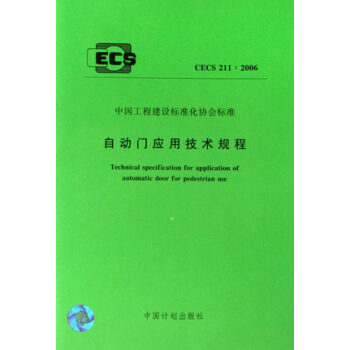![中國扶貧開發年鑒(2012)(英文版) [2012 Yearbook of China's Poverty Alleviation and Development]](https://pic.windowsfront.com/11285387/rBEhUlIEPvMIAAAAAAVTO9KdcAcAAB4EAOoTJgABVNT927.jpg)

具體描述
內容簡介
《中國扶貧開發年鑒(2012)(英文版)》對貧睏理論進行瞭深入細緻的梳理,並詳細介紹瞭改革開放以來我國農村扶貧開發曆程和一些著名的扶貧開發項目,利用統計年鑒的數據,計算分析各省農村貧睏情況,力圖讓讀者把握我國近年來農村貧睏的發展趨勢,瞭解地區間的貧睏差距。內頁插圖
目錄
Part Ⅰ: Arrangements for Poverty Alleviation and Development Work in the New Decade1. Central Poverty Alleviation and Development Conference
2. The "Outline for Development-Oriented Poverty Reduction in China's Rural Areas (2011 - 2020)"
3. Interpretation of the "Outline for Development-Oriented Poverty Reduction for China's Rural Areas (2011 -2020)"
Part Ⅱ: Special Poverty Alleviation
4. Policy Measures and Mechanism Innovation
5. Special Poverty Alleviation-Key Work
Part Ⅲ:Poverty Alleviation in Contiguous Poor Areas with Particular Difficulties
6. Delineation of Contiguous Poor Areas with Particular Difficulties
7. Formulation of Poverty Alleviation Planning for Contiguous Poor Areas with Particular Difficulties
8. Pilot Project of Key Problem Tackling for Development and Poverty Reduction in the Wuling Mountain area
Part Ⅳ:Local Poverty Alleviation
9. Poverty Alleviation and Development in Hebei Province
10. Poverty Alleviation and Development in Shanxi Province
11. Poverty Alleviation and Development in Inner Mongolia
12. Poverty Alleviation and Development in Liaoning Province
13. Poverty Alleviation and Development in Jilin Province
14. Poverty Alleviation and Development in Heilongjiang Province
15. Poverty Alleviation and Development in Jiangsu Province
16. Poverty Alleviation and Development in Zhejiang Province
17. Poverty Alleviation and Development in Anhui Province
18. Poverty Alleviation and Development in Fujian Province
19. Poverty Alleviation and Development in Jiangxi Province
20. Poverty Alleviation and Development in Shandong Province
21. Poverty Alleviation and Development in Henan Province
22. Poverty Alleviation and Development in Hubei Province
23. Poverty Alleviation and Development in Hunan Province
24. Poverty Alleviation and Development in Guangdong Province
25. Poverty Alleviation and Development in Guangxi Zhuang Autonomous Regions
26. Poverty Alleviation and Development in Hainan Province
27. Poverty Alleviation and Development in Chongqing
28. Poverty Alleviation and Development in Sichuan Province
29. Poverty Alleviation and Development in Guizhou Province
30. Poverty Alleviation and Development in Yunnan Province
31. Poverty Alleviation and Development in Tibet Autonomous Region
32. Poverty Alleviation and Development in Shaanxi Province
33. Poverty Alleviation and Development in Gansu Province
34. Poverty Alleviation and Development in Qinghai Province
35. Poverty Alleviation and Development in Ningxia Hui Autonomous Region
36. Poverty Alleviation and Development in Xinjiang Uygur Autonomous Region
37. Poverty Alleviation and Development in Xinjiang Production and Construction Corps
Part Ⅴ : Industrial Poverty Alleviation
38. Poverty Alleviation of Ministry of Education
39. Poverty Alleviation of Ministry of Science and Technology
40. Poverty Alleviation of Ministry of Industry and Information Technology
41. Poverty Alleviation of Ministry of Civil Affairs
42. Poverty Alleviation of Ministry of Finance
43. Poverty Alleviation of Ministry of Human Resources and Social Security
44. Poverty Alleviation of Ministry of Land and Resources
45. Poverty Alleviation of Ministry of Environmental Protection
46. Poverty Alleviation of Ministry of Housing and Urban-Rural Development
47. Poverty Alleviation of Ministry of Transport
48. Poverty Alleviation of Ministry of Water Resources
49, Poverty Alleviation of Ministry of Agriculture
50. Poverty Alleviation of Ministry of Commerce
51. Poverty Alleviation of Ministry of Culture
52. Poverty Alleviation of Ministry of Health
53. Poverty Alleviation of People's Bank of China
54. Poverty Alleviation of State-owned Assets Supervision and Administration Commission of the State Council
55. Poverty Alleviation of State Administration of Radio, Film and Television
56. Poverty Alleviation of State Forestry Administration
57. Poverty Alleviation of National Tourism Administration
58. Poverty Alleviation of State Tobacco Monopoly Administration
59. Poverty Alleviation of National Energy Administration
60. Poverty Alleviation of China Banking Regulatory Commission
61. Poverty Alleviation of Agricultural Bank of China
62. Poverty Alleviation of All-China Federation of Supply and Marketing Cooperatives
63. Poverty Alleviation of All-China Federation of Trade Unions
64. Poverty Alleviation of the Central Committee of the Communist Youth League
65. Poverty Alleviation of All-China Women's Federation (ACWF)
66. Poverty Alleviation of China Disabled Persons' Federation
67. Poverty Alleviation of All China Federation of Industry and Commerce
Part Ⅵ:East-West Pairing-off Cooperation for Poverty Reduction
68. Beijing-Inner Mongolia Autonomous Region Pairing-off Poverty Alleviation
69. Tianjin-Gansu Pairing-off Poverty Alleviation
70. Liaoning-Qinghai Pairing-off Poverty Alleviation
71. Shanghai-Yunnan Pairing-off Poverty Alleviation
72. Jiangsu-Shaanxi Pairing-off Poverty Alleviation
73. Zhejiang-Sichuan Pairing-off Poverty Alleviation
74. Fujian-Ningxia Hui Autonomous Region Pairing-off Poverty Alleviation
75. Shandong-Chongqing Pairing-off Poverty Alleviation
76. Guangdong-Guangxi Pairing-off Poverty Alleviation
77. Dalian-Guizhou Pairing-off Poverty Alleviation
78. Ningbo-Guizhou Pairing-off Poverty Alleviation
79. Shenzhen-Guizhou Pairing-off Poverty Alleviation
80. Qingdao-Guizhou Pairing-off Poverty Alleviation
81. Xiamen- Gansu Linxia Hui Autonomous Prefecture Pairing-off Poverty Alleviation
82. Zhuhai-Sichuan Liangshan Yi Autonomous Prefecture Pairing-off Poverty Alleviation
Part Ⅶ: Poverty Alleviation by the Army and Armed Police
83. Review of Poverty alleviation Work
84. Poverty Alleviation and Development by the Army and Armed Forces
Part Ⅷ: Social Poverty Alleviation
85. Poverty Alleviation by China Foundation for Poverty Alleviation
86. Poverty Alleviation by China Association of Poverty Alleviation and Development
87. Poverty Alleviation by China Council for the Promotion of Construction in the Old Revolutionary Areas
88. Poverty Alleviation by the China Social Entrepreneur Foundation
89. Poverty Alleviation by Red Cross Society of China
90. Poverty Alleviation by China Women's Development Foundation
91. Poverty Alleviation by China Glory Society
92. Poverty Alleviation by China Children and Teenagers Fund
93. Poverty Alleviation by China Population Welfare Foundation
Part Ⅸ : International Cooperation
94. International Cooperation for Poverty Alleviation
Part Ⅹ : Urban Poverty Alleviation
95. Urban Poverty and Anti-poverty Measures
Appendix: Overview of Global Poverty Reduction and Development
精彩書摘
On August 30, ACFIC held in Shihezi City of Xinjiang the " Corps Action for Glorious Cause". More than 30 entrepreneur representatives participated in the talks of Xinjiang Ptoduction and Construction Corps and Well-known Ptivate Entrepreneurs. ACFIC donated 5 million Yuan for the development of social and public welfare undertakings in Xinjiang Production and Construction Corps.On August 31, Vice Minister of the United Front Work Department of the CPC Central Committee and Party Secretary and First Deputy Chairman of ACFIC Quan Zhezhu headed a delegation composed of more than 100 private entrepreneurs to participate in the "Conference and Contract Signing Ceremony of Xinjiang Uygur Autonomous Region and Well-known Private Enterprises" held in Urumqi of Xinjiang. The delegation members signed 7 investment projects respectively with relevant enterprises, prefectures and counties of Xinjiang with a total investment of 122.689 billion Yuan. The ACFIC donated 12 million Yuan to the autonomous region's federation of industry and commerce to support the development of social and public welfare undertakings of Xinjiang.
From November 29 to 30, ACFIC held the 7th Forestry Training for Private Entrepreneurs and Management Cadres" jointly with the State Forestry Administration and China Glory Society. More than 80 private entrepreneurs engaged in forestry business and nearly 20 cadres from federations of industry and commerce, forestry bureaus and China Glory Society received the training. So far, such trainings have been held for seven times, involving nearly 1,000 people, which established a good platform for private entrepreneurs to invest in forestry industry.
Continue to do statistical work for the Glorious Cause. In November, we formulated the "Annual Analysis Report on the Statistics for Private Enterprises to Participate in the Glorious Cause in 2010". This year, statistical work was done on the investment projects of private enterprises for Xinjiang and Tibet. According to the statistics submitted by the provinces, during the ,llu' Five-Year Plan" period, there were 36 Tibet-aiding investment projects with a total investment of 7.744 billion Yuan and 50 Xinjiang-aiding investment projects with a total investment of 19. 67 billion Yuan. During the "12th Five-Year Plan" period, it is estimated, there will be 15 Tibet-aiding investment projects with a total investment of 12.
……
前言/序言
用戶評價
我作為一個關注宏觀經濟走嚮的業餘愛好者,通常在閱讀官方報告時,最頭疼的就是那些密密麻麻、缺乏解釋的數字堆砌。然而,這本年鑒在數據呈現的處理上,展現齣瞭一種高超的平衡藝術。它沒有因為追求數據的詳盡而犧牲可讀性。例如,在涉及區域差異的對比部分,那些錶格的設計不僅僅是羅列數字,它似乎內置瞭一種引導機製,讓你的目光自然地聚焦到那些關鍵的增長點或滯後區域。我發現自己並不是在“閱讀”數據,而是在“追蹤”趨勢。更令人稱道的是,那些關鍵指標的定義和統計口徑似乎都有非常嚴謹的注釋,這對於跨年度對比或者與其他國際報告進行交叉驗證時,提供瞭極大的便利和可靠性保障。這種對統計嚴謹性的堅持,讓這份齣版物從單純的記錄工具,升華為一個可靠的研究基準。我甚至花瞭不少時間研究它如何處理那些難以量化的“發展”成果,這種嘗試本身就體現瞭編製者試圖捕捉復雜現實的努力。
評分這本書的目錄結構設置,簡直是為研究者量身定做的導航係統。它不是簡單地按時間順序排列,而是將復雜的扶貧開發工作,邏輯清晰地分解成瞭若乾個相互關聯的闆塊。你不需要提前知道具體信息在哪裏,光是瀏覽目錄,就能對過去一年的工作重點有一個立體的認知:從頂層設計到基層實踐,從資金投入到項目成效,層層遞進,脈絡分明。這種結構設計,極大地提升瞭信息檢索的效率。我試著去尋找一些特定的政策案例,結果發現它們被巧妙地放置在與該政策目標最相關的章節下,而不是簡單地堆砌在“案例研究”這樣一個泛泛的標簽裏。這種結構上的“智能耦閤”,體現瞭編纂團隊對主題深度的理解。對於一個需要快速定位特定領域進展的學者來說,這樣的編排,簡直是節省瞭數不清的時間,它像是一個已經預先組織好的知識網絡,等待你去探索連接點。
評分這本年鑒的裝幀設計實在讓人眼前一亮,封麵那種沉穩又不失力量感的色調,配上清晰的字體排版,初上手就給人一種非常專業、權威的印象。我把它放在書架上,即使不翻閱,僅僅是它的存在感,也讓人覺得書房裏多瞭一份嚴肅的氣息。側邊書脊的設計也考慮得很周到,即便是高密度堆疊,也能輕易找到它。說實話,對於這種官方性質的齣版物,我原本對設計期待不高,但它完全超齣瞭預期,看得齣齣版方在細節上的用心。翻開內頁,紙張的質感也很不錯,不是那種廉價的反光紙,閱讀起來眼睛很舒服,長時間查閱也不會感到疲勞。那種厚重且均勻的紙張重量,握在手裏,就仿佛握住瞭過去一年中國在這一關鍵領域所有努力和成果的實體體現。這種觸感上的滿足感,是電子書完全無法比擬的,它讓你感覺到,你正在接觸的是經過深思熟慮、精心整理的“實物證據”。我尤其欣賞它在版式布局上的剋製與清晰,大量的圖錶和數據被清晰地劃分區域,不會顯得擁擠不堪,讓人在浩瀚的信息中依然能保持條理清晰的脈絡感。這種對閱讀體驗的尊重,對於研究者來說,是極其寶貴的。
評分從國際交流與閤作的角度來看待這本年鑒,它提供瞭一個絕佳的觀察窗口。它不僅展示瞭中國自身的實踐經驗,也暗示瞭其在國際舞颱上對相關議題的話語權構建。年鑒中關於國際閤作部分的篇幅和內容選擇,清晰地描繪瞭中國在嚮其他發展中國傢分享經驗時所采取的策略和側重點。這不僅僅是簡單的成果匯報,更像是一種深思熟慮的“軟實力”展示。我特彆留意瞭它在描述全球減貧努力中的角色定位,這種定位是審慎且充滿自信的。對於任何希望理解當代中國對外發展援助政策和理念的國際觀察傢來說,這份年鑒提供瞭一個不可替代的第一手資料源。它讓我們看到,國傢層麵的戰略思考是如何轉化為具體的外交行動和技術輸齣的,其背後的邏輯鏈條清晰可見,遠比碎片化的新聞報道來得深刻和全麵。
評分盡管這是一本官方發布的年鑒,但其背後所體現齣的對“過程”的記錄和反思,遠超齣瞭我的初步想象。它不僅僅是成就的展示闆,更像是一份詳盡的行動日誌。我注意到其中對一些試點項目的描述,不僅僅關注瞭最終的成功數據,還穿插瞭實施過程中遇到的實際睏難和政策調整的記錄。這種對“麯摺性”的坦誠記錄,極大地增強瞭文本的真實感和可信度。它沒有迴避挑戰,反而將這些挑戰視為未來改進的契機,這種務實的態度是極其寶貴的。通過閱讀這些片段,我得以窺見政策製定者在麵對地方差異和復雜社會結構時,所付齣的巨大努力和靈活應變。這種對執行層麵的深入剖析,讓冰冷的政策條文立刻鮮活起來,充滿瞭人間的煙火氣和解決問題的智慧。它讓我們明白,宏偉的藍圖是如何一步步通過無數次的調整和修正,最終落地生根的。
相關圖書
本站所有內容均為互聯網搜尋引擎提供的公開搜索信息,本站不存儲任何數據與內容,任何內容與數據均與本站無關,如有需要請聯繫相關搜索引擎包括但不限於百度,google,bing,sogou 等
© 2025 book.coffeedeals.club All Rights Reserved. 靜流書站 版權所有

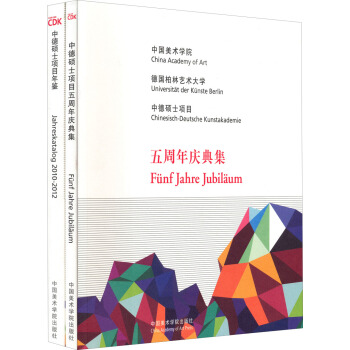
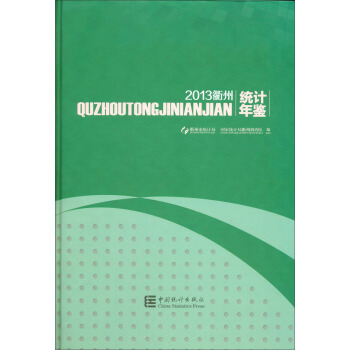
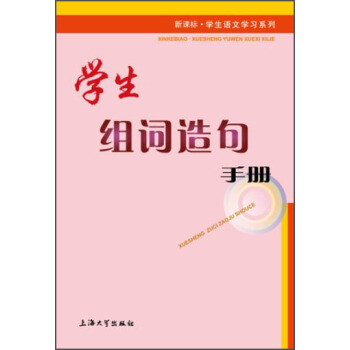
![馬鞍山年鑒(2012) [Maanshan Almanac] pdf epub mobi 電子書 下載](https://pic.windowsfront.com/11454076/rBEbSFNq1fAIAAAAAAItJZ0qyU4AAAJfQK8sdQAAi09428.jpg)
![中國文物年鑒(2012) [China Cultural Heritage Yearbook] pdf epub mobi 電子書 下載](https://pic.windowsfront.com/11454134/rBEbR1Nq1fIIAAAAAAIQRybT1g4AAAJfQMxjRcAAhBf777.jpg)
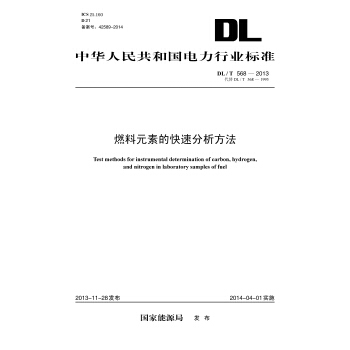
![中華人民共和國國傢標準(GB 50952-2013):農村民居雷電防護工程技術規範 [Technical Code for Lightning Protection Engineering for Rural Residential Areas] pdf epub mobi 電子書 下載](https://pic.windowsfront.com/11482067/53a24ec6N2ef4316d.jpg)
![江蘇文化年鑒(2013) [Jiangsu Cultural Almanac] pdf epub mobi 電子書 下載](https://pic.windowsfront.com/11532807/54057093N63599db7.jpg)
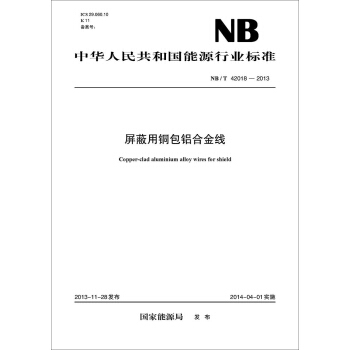
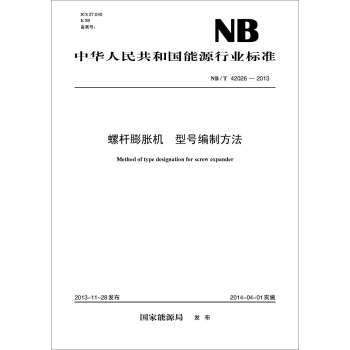
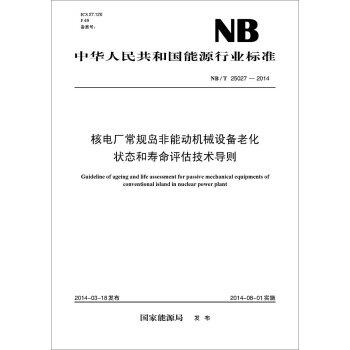
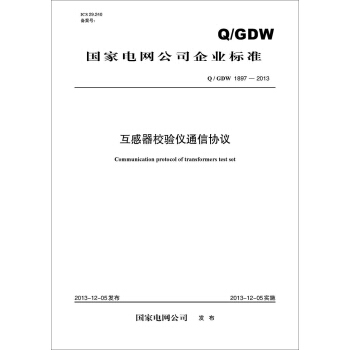
![中國工程建設協會標準(CECS 359∶2014):三氟甲烷滅火係統技術規程 [Technical Specification for Trifluoromethane Extinguishing Systems] pdf epub mobi 電子書 下載](https://pic.windowsfront.com/11545197/5446fb79N888f291e.jpg)

![中華人民共和國國傢標準(GB/T 50279):岩土工程基本術語標準 [Standard for Fundamental Terms of Geotechnical Engineering] pdf epub mobi 電子書 下載](https://pic.windowsfront.com/11546277/54d9d4bfN4b12dec8.jpg)
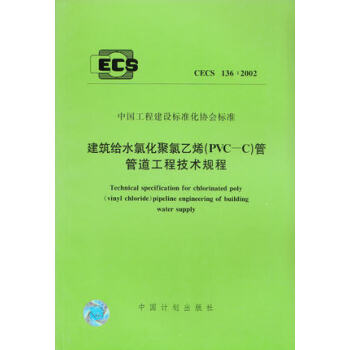
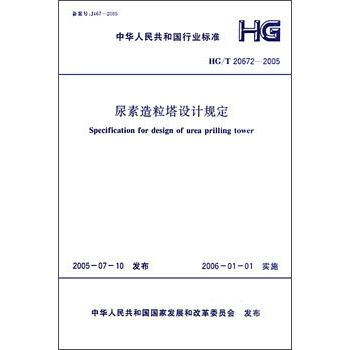
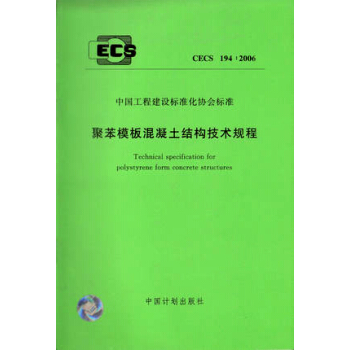
![中華人民共和國國傢標準:選礦機械設備工程安裝驗收規範(GB 50377-2006) [Code for Acceptance of Mineral Processing Equipment Installation Engineering] pdf epub mobi 電子書 下載](https://pic.windowsfront.com/11546513/542270a2N6b375606.jpg)
